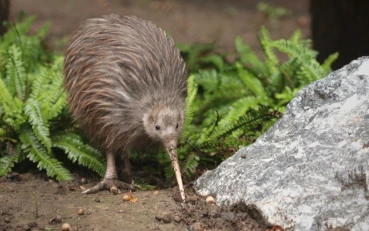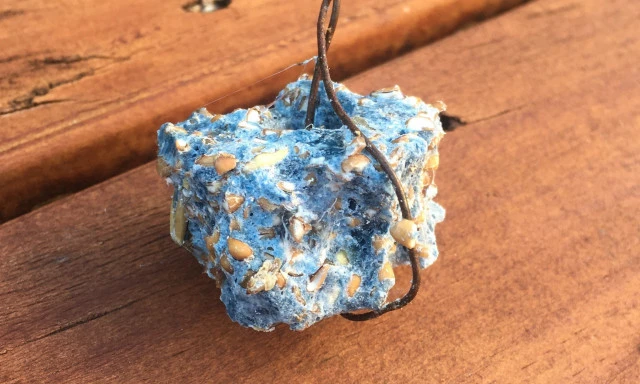How to use traps to control rat and mice populations
Rodent snap traps are a safe, non-toxic and effective way to control rodent populations. Traps can be used on their own, or in conjunction with rodenticides (bait) to eradicate rats and mice from your property. Traps are a traditional way to catch and kill rats and mice and can be effective if used properly. However, if traps are poorly designed, are not set and baited properly or are set in poor positions, they can be inhumane and ineffective. If the rodent is not killed quickly the trap may cause pain and suffering for hours or days. If the rodent sets off the trap but is not caught it may become trap shy and will avoid traps, making it difficult or impossible to catch.
Understanding rodent behaviour will help you get the best results from your Kiwicare rat traps and mouse traps.
Step 1: Search for evidence of rodents
Search for evidence of rodent activity such as droppings and gnaw marks on pipes, wiring and wood. While doing this keep an eye out for possible entry points. Rats and mice can squeeze through gaps that they can get their head through. This can be as narrow as a pencil. Look around your buildings and seal gaps under doors, around pipes and cables, broken vents, etc. It's best to seal up entry points after an infestation has been eliminated.
Rats and mice are good climbers and often enter at eaves, so cut vegetation away from the eaves and roof. Climbing plants should be pruned well below building eaves, while overhanging trees should be cut back 2m from your roof.
Step 2: Remove food sources
To make your traps tempting to rodents, you need to restrict their access to other food sources. The more variety they have on offer, the less likely they are to investigate your traps. Do a sweep through of your property and ensure food in kitchens is securely refrigerated or sealed away in containers, animal food (including bird seed) is cleaned up an secured away. Check that fruit on trees and bushes, including fruit not edible to humans like berries that birds eat are cleared away and disposed of. Also make sure that rubbish is securely stored in closed rubbish bins.
Step 3: Trapping rats and mice
Kiwicare has a wide range of traps, rodenticides and bait stations available in the market. Once you’ve finished reading the article you can view our range of rodent control products here.
- The best baits for use in traps
The best baits to use on rat traps are bacon (raw, un-smoked), peanut butter, lard, dried fruit, dog biscuit and grain.
The best baits to use for mouse traps are chocolate, peanut butter, lard, dried fruit, grain, and mild cheese.
- Setting rodent traps
Wear clean gloves or wash hands and rinse thoroughly before setting rodent traps to reduce foreign odours on the traps that might discourage rodents. Take care to place bait in traps so that they will trigger the mechanism to reach it.
Change bait types if rodents are still present but are not being caught. But do not change the position of the trap. Clean old or decaying bait from traps. Rodents prefer fresh baits.
- Where to place traps for rats and mice
 Rodents are usually active at night and prefer dark enclosed spaces. Seeing rodents during the day suggests large numbers and competition for food. In open areas, they will stay against vertical surfaces such as walls, fences, furniture etc. They are creatures of habit and will use the same paths on repeated nights. Rodents have good memories of the routes.
Rodents are usually active at night and prefer dark enclosed spaces. Seeing rodents during the day suggests large numbers and competition for food. In open areas, they will stay against vertical surfaces such as walls, fences, furniture etc. They are creatures of habit and will use the same paths on repeated nights. Rodents have good memories of the routes.Rats are suspicious of new things in their environment (neophobia), but mice are more curious and may interact with traps more quickly.
Place traps perpendicular to and against walls or other upright surfaces where rats have been traveling or are likely to travel. Set in good locations traps will work without using bait.
Snap traps can be used inside and outside. If using outside, place them in sheltered areas, preferably protected from rain and weather which would make bait deteriorate.
Creating an enclosed space with objects and placing the trap within can be beneficial, but always leave two entrances to the space. Rodents are reluctant to enter areas with only one escape route.
Although Roof rats are excellent climbers, and they will run along fence lines, tree branches and power lines, these are not good places to set traps.Be patient. Rats may take several days to 'get used' to the trap in their environment before they enter the trap for the bait. You should consider placing the trap unset in position for a couple of days, so they get used to it and discount it as a risk, before baiting and setting it.
- Checking, cleaning and resetting rodent traps
It is important to check traps regularly so that activated traps can be cleared and reset. Rodents also prefer fresh bait. If a bait has been there for a while, it should be replaced with fresh bait and potentially a different food type.
Wear gloves when clearing away dead rats and cleaning the trap’s bait holder of old bait. Gloves help to protect wearers from disease, they also prevent human scents getting onto the traps, which can be a deterrent for rats and mice.
Make sure that traps are returned to their original positions to avoid rodents becoming suspicious of them. Rats and mice also follow the same paths routinely. They have very good spatial awareness and have a ‘map’ of their environment in their brain. They have poor eyesight but can find their way by memory, touch and smell.
Need a bit more guidance on getting rid of rats and mice?
Kiwicare’s Easy 1-2-3 Steps to Rodent Control article could be just what you need. It’s filled with useful information on how to identify rodents, their behaviours and on how to make your home and property rodent free.
Our Rodent Control How-to Videos are also jam packed with useful information and visual guides on how to use our rodent control products.
How getting rid or rats and mice can help save our native birds
Every year in NZ approximately 25 million native birds are killed by introduced predators like rats, mice and possums. Predators like these don’t only put birds at risk by preying on their eggs, they also compete with them for food and destroy our native plants. Currently 4,000 native species are threatened or at risk of extinction in New Zealand.
Controlling the rodents in your home and backyard is a great way to help protect New Zealand’s native birds and keep our birdsong going strong. Find out more about Kiwicare’s Predator-Free movement and how you can get involved.




